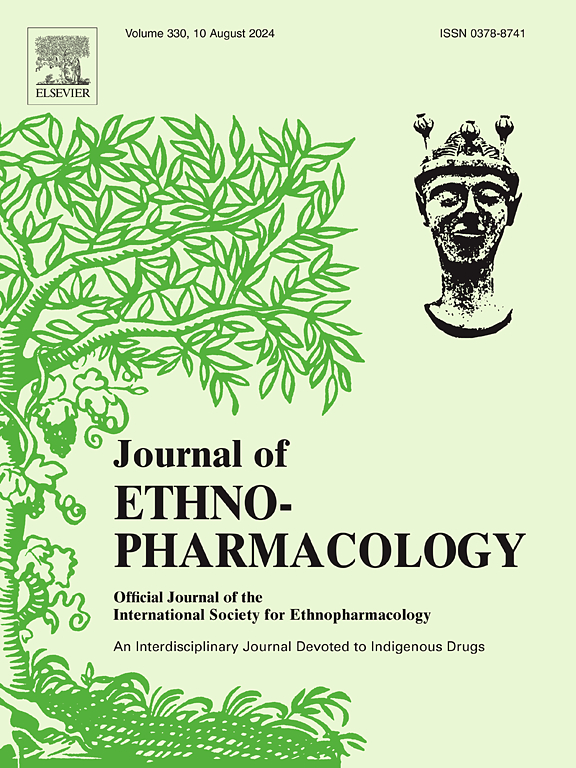Integrating transcriptomics and network pharmacology to reveal the effect and mechanism of Bai-Jie-Jing-Xie ointment on improving skin inflammation of psoriasis
IF 4.8
2区 医学
Q1 CHEMISTRY, MEDICINAL
引用次数: 0
Abstract
Ethnopharmacological relevance
Psoriasis is a global chronic, immune-mediated, inflammatory skin disease. Bai-Jie-Jing-Xie (BJJX) ointment has been widely used in the clinic practice for its notable efficacy and is an empirical prescription for psoriasis treatment in hospitals. Nevertheless, its precise mechanism of action on psoriasis remains unclear.
Aim of the study
To study the mechanism of action of the hospital empirical prescription BJJX in the treatment of psoriasis.
Material and methods
Imiquimod (IMQ) was used to induce the psoriasis model in BALB/c mice and UPLC-MS/MS analysis was used for quality control. Subsequently, a combination of network pharmacology (NP) and Transcriptomic (RNA-Seq) methodology was used to assess the potential targets and mechanisms of action of BJJX on psoriasis. Finally, further validation was performed using flow cytometry, RT-qPCR, and western blotting.
Results
BJJX significantly ameliorated IMQ-induced skin damage in psoriatic mice, reduced keratinocyte proliferation, and inhibited the levels of inflammatory factors (IL-23, IL-22, IL-17A, IL-6, IL-1β, and IL-8). NP predicts that BJJX may exert its therapeutic effects on psoriasis by modulating the IL-17 signaling pathway and Th17 cell differentiation. RNA-Seq analysis showed that BJJX regulated the expression of IL-17 pathway-related genes. Further experimental results demonstrated that BJJX treatment significantly reduced the mRNA expression of inflammatory factors CXCL2, CXCL3, MMP13, IL-1β, IL-23, IL-22, and IL-17A, as well as the proportion of Th17 cells. In addition, BJJX significantly inhibited the protein expression of JAK2 and STAT3.
Conclusions
BJJX attenuated IMQ-induced skin lesions in psoriasis mice by decreasing the expression of cytokines and chemokines mediated by the Th17/IL-17 axis. This study revealed, for the first time, the mechanism used by BJJX to treat psoriasis, providing a new paradigm for its pharmacological role in the clinical treatment of psoriasis.

求助全文
约1分钟内获得全文
求助全文
来源期刊

Journal of ethnopharmacology
医学-全科医学与补充医学
CiteScore
10.30
自引率
5.60%
发文量
967
审稿时长
77 days
期刊介绍:
The Journal of Ethnopharmacology is dedicated to the exchange of information and understandings about people''s use of plants, fungi, animals, microorganisms and minerals and their biological and pharmacological effects based on the principles established through international conventions. Early people confronted with illness and disease, discovered a wealth of useful therapeutic agents in the plant and animal kingdoms. The empirical knowledge of these medicinal substances and their toxic potential was passed on by oral tradition and sometimes recorded in herbals and other texts on materia medica. Many valuable drugs of today (e.g., atropine, ephedrine, tubocurarine, digoxin, reserpine) came into use through the study of indigenous remedies. Chemists continue to use plant-derived drugs (e.g., morphine, taxol, physostigmine, quinidine, emetine) as prototypes in their attempts to develop more effective and less toxic medicinals.
 求助内容:
求助内容: 应助结果提醒方式:
应助结果提醒方式:


